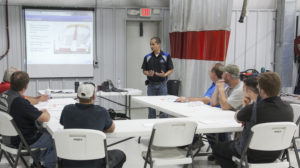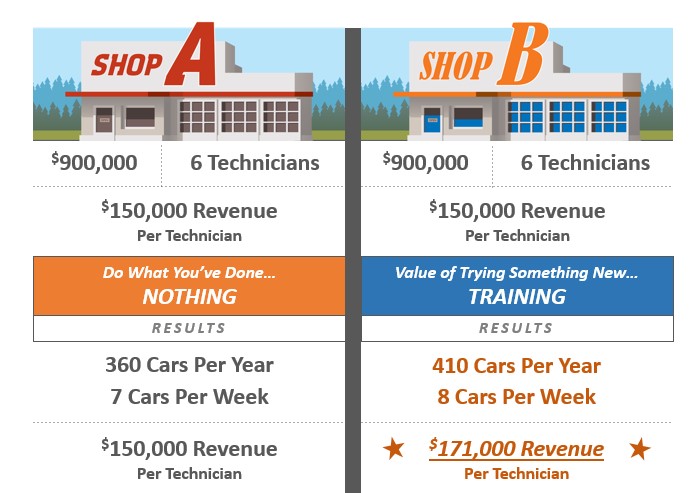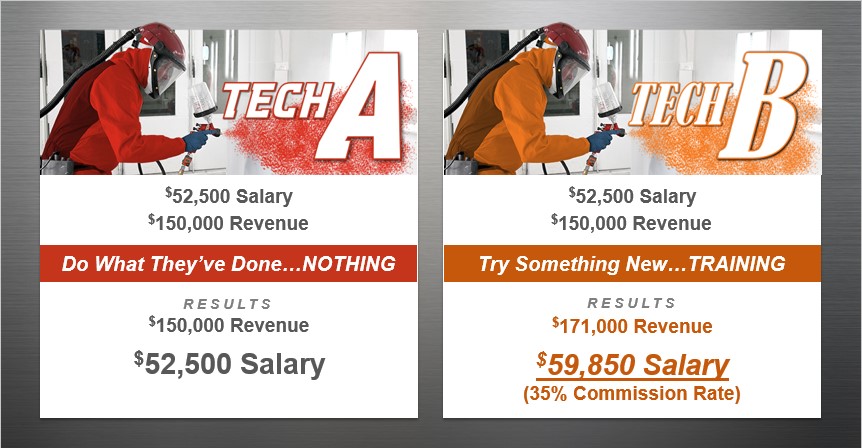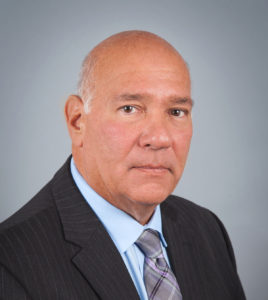
I-CAR guest column: Calculate your shop’s training ROI with calculator coming soon
By onAssociations | Business Practices | Education | Repair Operations
Editor’s note: In the latest in an I-CAR column series on industry issues, I-CAR director of business development for collision repair and education Nick Notte addresses the “What’s in it for me?” question some auto body shop owners and staff ask regarding training. Read on for I-CAR’s answer and an announcement of a new tool to help make the organization’s case.
By Nick Notte
Just imagine: You walk into work, hit the lights, review yesterday’s work-in-process and what needs to be done today of your existing projects. You open the door to the shop, and to your surprise, there it sits: the newest vehicle off the line, featuring high-strength steel, ultra-high strength steel, aluminum, carbon fiber and the latest consumer-safety technology.
Before you even evaluate the collision damage, your mind immediately starts racing: Do we have the right information to facilitate this repair? Do we have the right training and equipment?
Throughout my career in the collision repair industry, I have heard stories similar to this scenario over and over again. I also know the answer to those questions has far-reaching implications on business performance as well, and influences how shops manage cycle time and other key performance indicators (KPIs). Whether it’s a lack of properly trained technicians or those who cannot handle high volumes of vehicle repairs coming in, this problem is evident and apparent.
Cycle time, commonly measured by “keys to keys” or drop-off to delivery, is the time required to complete a process. Imagine a frustrated technician who just received an aluminum or hybrid materials vehicle in his/her bay and has no experience or proper training to repair that front end hit without additional time spent to research what needs to be done.
Now, imagine this same scenario’s impact on touch time, the average number of hours spent working on the vehicle per day. Direct repair programs use cycle time while insurers use touch time to determine rental car duration. Working against the clock and demands of the shop’s everyday workflow plus insurer program/DRP pressure can be frustrating.
We determined — through development of the 2015 I-CAR “Data Proves ROI of Collision Repair Training” white paper — well-trained technicians can repair vehicles faster, and as a result, shorten car rental days — both important factors to reducing total cost-to-repair. Insurers may equally use KPIs to evaluate a shop’s performance for potential inclusion in their repair network.
So how are we getting ahead while considering these factors and preparing our technicians to face the “Technical Tsunami,” the growing wave in new technology? And, how can we use the white paper findings to determine a solution that has real business results?
We know this: No matter the number of technicians in a single shop or where their current KPI standards are, goals must be set to achieve optimum results with the number of technicians currently employed.
It’s easier said than done. But in what tangible way can we prepare our technicians and shop owners/managers to look ahead and calculate their own goals and bottom lines, as well as maximizing the most out of their business’s bottom line?
This scenario — so common, so widespread — shows a lack of training in the industry as well as a clear understanding of the importance of collision repair goals and KPIs. Businesses must understand that if they’re to survive and thrive through this wave, they must also expand beyond traditional technician training into effective management of the repair production process.
If you’re not measuring KPIs, you should be — key performance indicators measure current workflow and set baselines for how shops can improve on production processes.
I-CAR is helping the collision repair industry understand the positive correlation between training and repairer/shop KPIs, and how true “Learning Culture” organizations have learned to harness education and knowledge to build sustainable competitive and operating advantages.
Introducing the I-CAR shop training benefits calculator
We recognize that sometimes, training doesn’t feel like it has a tangible effect on your business. It does — and we’re here to help illustrate the way it does with the Shop Training Benefits Calculator.
I-CAR is launching a new process to help you measure the value of training in a shop’s success. Using KPI results developed in an actual shop study (and building upon what we learned through the white paper), shops will be able to leverage training to increase both efficiency and profitability for their business.
This new Training Benefits Calculator, the first of its kind, is an innovative new way for shops to calculate the value of training with a tool allowing shops to input their personal shop information and learn the true anticipated return on investment on training for both shops and technicians.
I-CAR will be launching a webpage offering a first glance at the functionality of the Training Benefits Calculator, where it will prompt shops to calculate their fiscal year revenue, number of employees, cars repaired/week and cars repaired/year.
Key performance indicators for value, return on investment
Why should we use KPIs as measurements of performance and quality in collision repair facilities? The answer is simple — we do want to measure shop/business’s performance and overall, help increase efficiency and profits in the workplace.
Shops who don’t envision complete business goals cannot expect to thrive in the evolving collision repair industry. Successful shops measure KPIs that include:
- Cycle time
- Touch time
- CSI (Customer Satisfaction Index) score
- Supplement frequency
Collision repair professionals use KPIs to measure both the performance and overall efficiency of collision repair shops.
In breaking down the figures of a shop KPI calculation to truly “dollarize” results, a Shop A versus Shop B was applied and illustrated at the I-CAR Volunteer & Instructor Conference in March. It focused on a real-world example and was more descriptive in terms of figures and realized ROI.
A small to mid-sized shop’s average $900,000 revenue/year’s growth opportunity can be calculated. This can be used to compare a shop which does nothing to improve the bottom line with another which takes the value of training into consideration.
I-CAR research found that shops committing to training improve their cycle time. For our example, let’s assume that Shop B improve cycle time by 14 percent. Shop B then improves throughput, moving more cars through the repair box.
Overall, the revenue a single technician may generate (in this example, projected at $150,000 per technician) increased by roughly 14 percent. That’s an overall incremental revenue gain of $126,000 for this business, pushing total revenue to $1,026,000.
In terms of a technician’s direct return on investment (as shown above), Technician B increased revenue for the business by $21,000 and increased his/her salary by $7,350, or over $600/month, based on a 35 percent commission rate.
Shop and technician cycle time improves by 14 percent, which allows the shop and tech to repair 14 percent more vehicles. That equates to $21,000 in additional revenue/tech to the shop and $7,350 to each trained technician, in this example. That’s the power of education in our industry.
I-CAR also unearthed some findings in a recent “white paper” entitled “Data Proves ROI of Collision Repair Training.” (Find it on our website at www.i-car.com.) It speaks of how to make the best of KPIs as shown in the following chart (works best on desktop):
| KPI | How the benefit converts to financial performance | Conversion conclusions |
| Cycle time | More time | Lower cycle time frees up technician hours which allows the shop to bring in more work and increase revenue/profit. The profit on that incremental work is significantly higher, as fixed costs have already been covered for the month/year. |
| Supplement frequency | More time | Lower supplement frequency frees up employee/technician hours which allows the shop to work more efficiently, and bring in more work to increase revenue/profit. |
| Rework frequency | More time, lower parts cost | Lower rework frequency frees up technician hours, allowing higher productivity, generating increased revenue and profit. |
| Employee turnover | More time, cost savings | Lower turnover improves shop productivity, plus results in a hiring cost savings. |
| Research time (hours) | More time | Lower research time frees up technician hours which allows the shop to bring in more work and increase revenue/profit. |
Training is good for business
I-CAR is invested in seeing that each and every collision repair facility survives and thrives despite the rapid rate of change in the industry. Training is good for business, and our hope is that by understanding training’s role in business development, we can together bridge the gaps of knowledge between training investment and ROI.
Once I-CAR’s Shop Training Benefits Calculator webpage launches, you will be able to sign up for email updates as well as receiving a notification for when the tool finally launches. I-CAR will be ready to supply you with an as accurate as possible calculation on your shop’s business bottom-line.
Nick Notte is I-CAR’s director of business development for collision repair and education.



